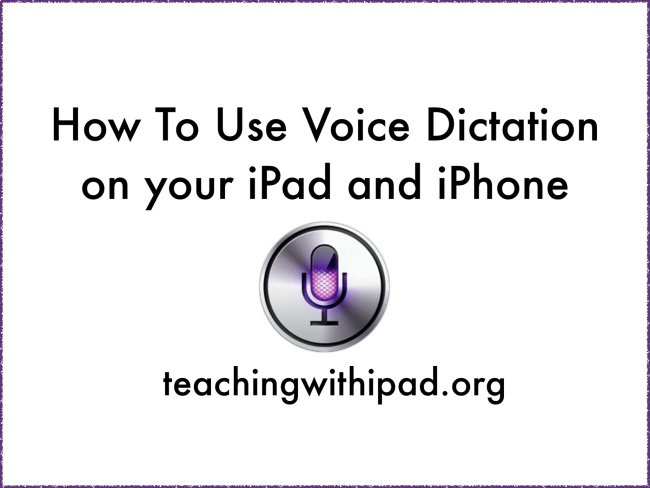Have you ever noticed the microphone button at the bottom left of your iPad’s keyboard? That’s the gateway to Voice Dictation, a feature I had known about but rarely used—until recently. In fact, I’m writing this very post while speaking in my car, and the accuracy has been impressive. As long as you speak clearly, mistakes are minimal, and it’s surprisingly fast.
Over the past few weeks, I’ve been using Voice Dictation for text messages, emails, and even blogging, and it has completely changed how I create content on my iOS devices.

How to use it
When you are ready to dictate, tap the microphone. A sound will occur and you are then to begin speaking. When you are done, press it again. It will take a short couple of seconds to transfer to text, and the text will appear. You should then quickly glance at the text, making sure there aren’t any glaring errors. Do not speak too quickly, or else it might miss a word here or there.
You can even add punctuation, so if you say “comma” in the right position, one will appear. Question marks and exclamation marks also work fine. As long as you speak clearly, and there is not much background noise (if at all). Voice Dictation will work any time a keyboard is required on ANY app.
Getting Started with Voice Dictation
Using it is simple:
- Tap the microphone icon on your keyboard.
- Wait for the audible sound indicating dictation is active.
- Speak clearly and at a steady pace.
- Tap the microphone again when finished.
In just a couple of seconds, your spoken words appear as text. A quick review is recommended to catch any minor errors.
Tips for best results:
- Speak slowly enough to ensure no words are skipped.
- Include punctuation by saying “comma,” “period,” “question mark,” or “exclamation mark.”
- Minimize background noise for maximum accuracy.
Voice Dictation works in any app that requires a keyboard, making it a versatile tool for everyday tasks.
Blogging with Voice Dictation
I have now been able to write a few blogposts using Voice Dictation and Evernote. Why Evernote? Because as soon as I have finished dictating it on my iPhone, I can go to my MacBook, open up Evernote, and the file will be the most recent file all the text already. I can then copy and paste the text onto my blogging platform do a few minor edits and that’s it! In terms of blogging, if I have arranged my thoughts and know what I want to share, then this is a much faster way to get text output.
I recently told my mother about this feature, and now she iMessages me speaking instead of typing. She has arthritis, so typing on an iPad screen is not exactly easy.
Classroom
The obvious advantage of Voice Dictation for students is for those that cannot type very fast or very well. All they have to do is speak what they would like typed out. I know students who are very good speakers, can articulate their thoughts very well, but have a lot of trouble with written output, be it through handwriting or typing.
This will work wonders for these students. They will feel much more accomplished when they see all the words that they have created just by speaking them.
Classroom Advantages
Voice Dictation is also a game-changer for students:
- Support for struggling typists: Students who type slowly or have difficulty handwriting can express themselves verbally and see their words instantly on the screen.
- Encourages confident expression: Students who are articulate speakers but struggle with written output can now produce text that matches their verbal ideas.
- Boosts accomplishment and motivation: Seeing their spoken words instantly appear as text gives students a tangible sense of success.
For educators, this means fewer barriers for students who might otherwise be frustrated by traditional writing tasks. It’s a tool that promotes inclusivity and allows all learners to engage fully with writing assignments.
Conclusion
Although I’m not a slow typer on the iPhone, it is much faster speaking into it. I speak a few sentences at a time. I now am using it whenever I have a few free minutes and need to organize thoughts or reply to emails. While sometimes it is beneficial to “think and type” while writing, other times it is just plain easier to dictate what I want to say. This is a much appreciated feature that I can see myself using every day.
Have you tried Voice Dictation? If not, give it a go, and let us know what you think in the comments!